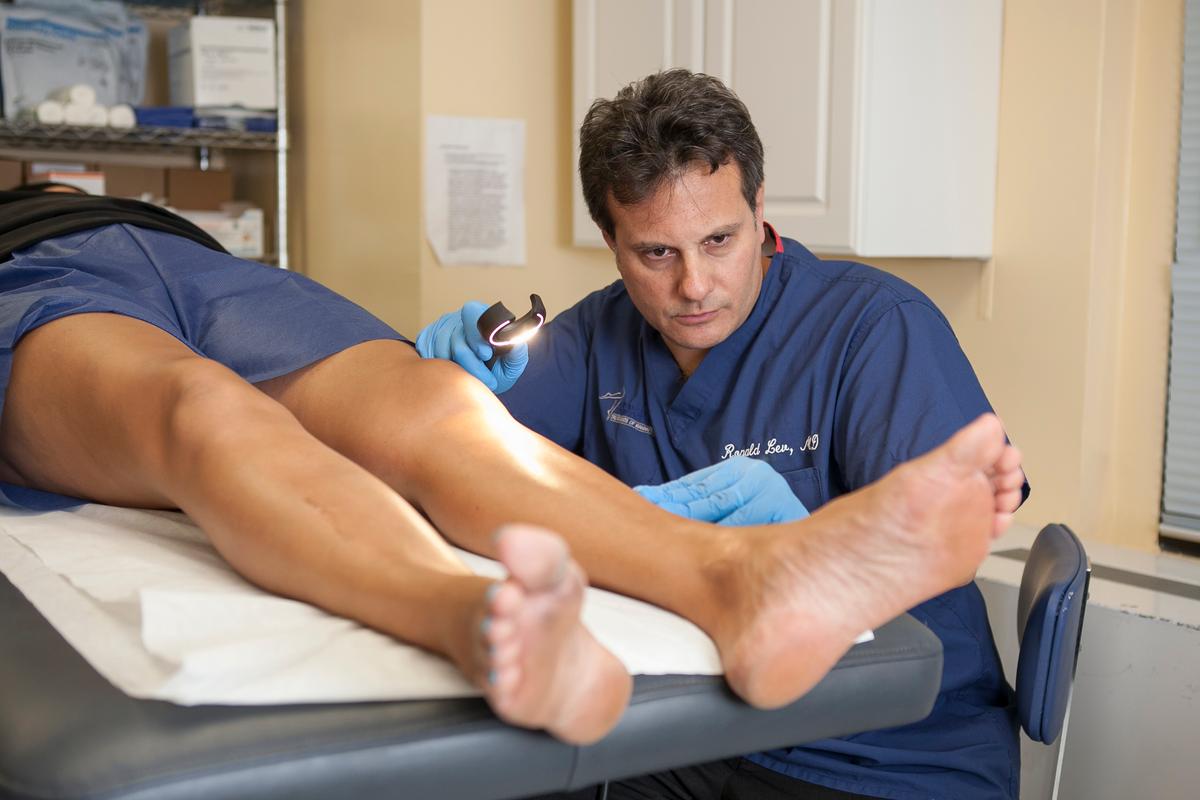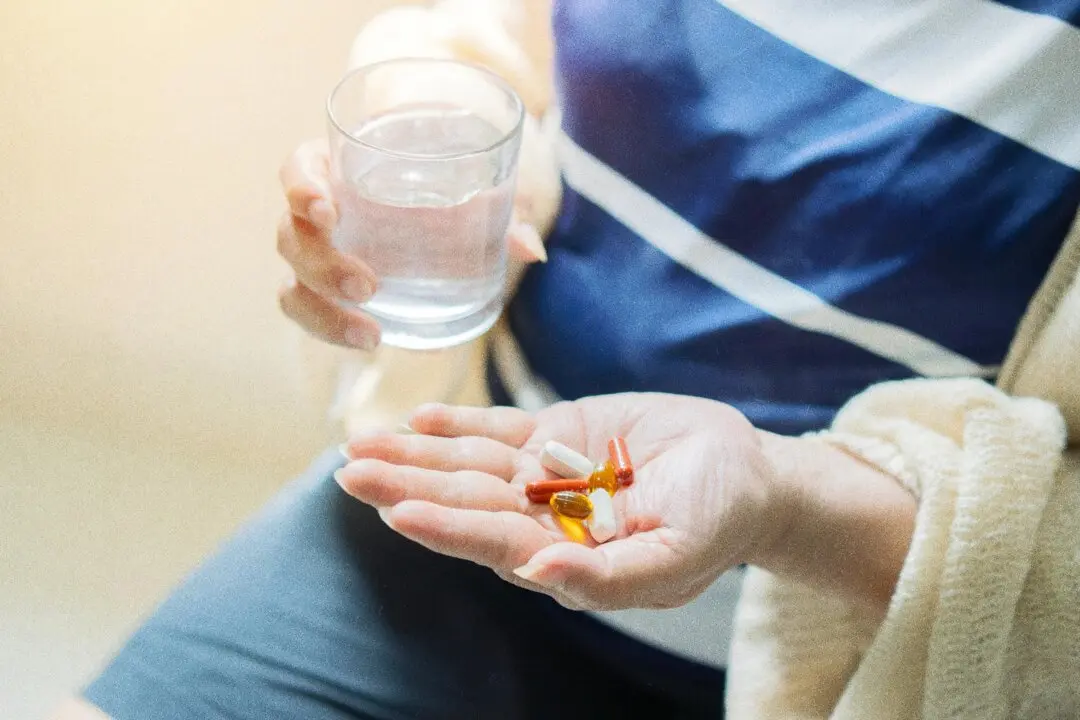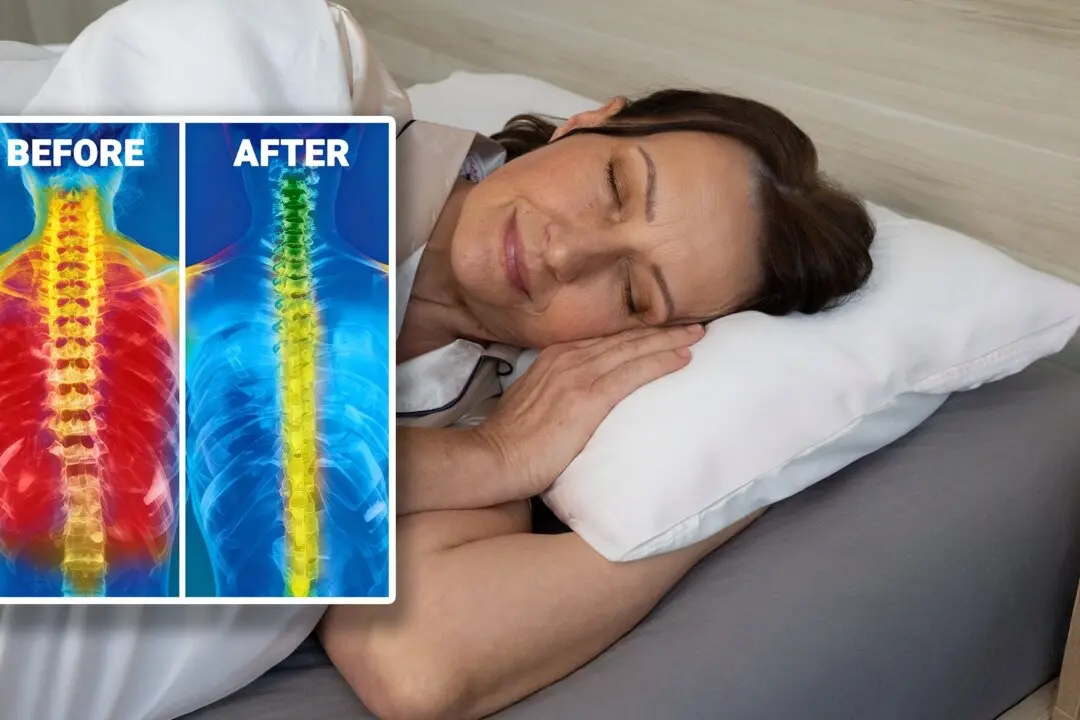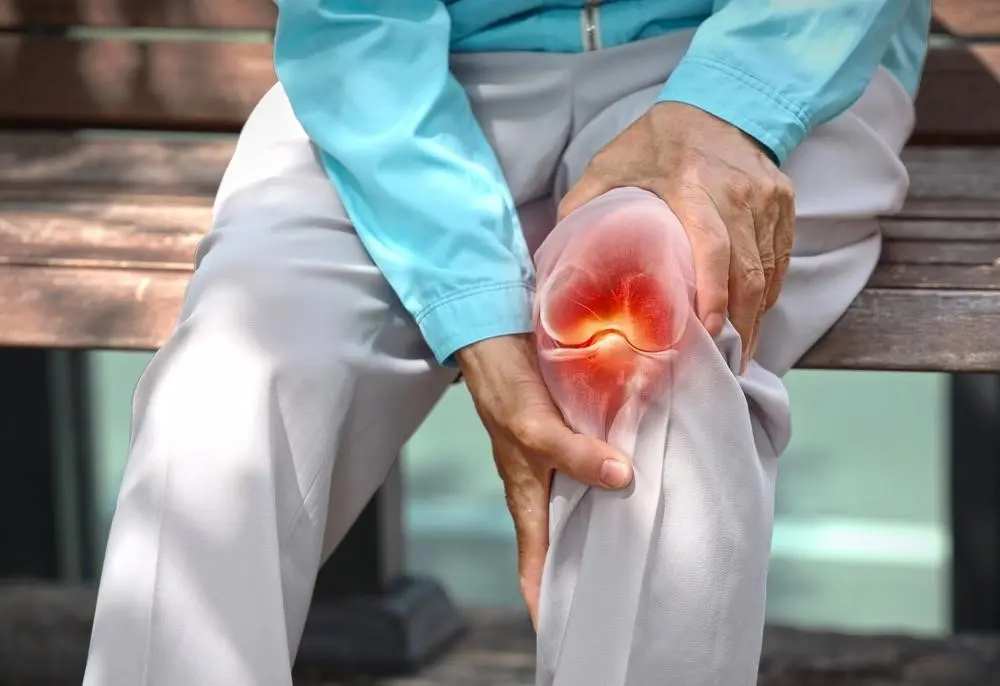When the warm weather arrives, and shorts and light shirts replace pants and heavy sweaters, varicose veins also get the light of day.
If your varicose veins make you uncomfortable—either because they are physically painful or they take an emotional toll—winter is the best time to treat them, according to Dr. Ronald Lev, founder of Advanced Varicose Vein Treatments of Manhattan.
Lev is one of only around 640 doctors in the United States certified by the American Board of Venous and Lymphatic Medicine (ABVLM), an independent nonprofit that certifies doctors exclusively for venous diseases (phlebology).
Here are some of the reasons that, according to Lev, make winter a good time to treat varicose veins.
 Dr. Ronald Lev in his Manhattan office. Dr. Lev is one of only about 640 doctors in the United States to be certified by the American Board of Venous and Lymphatic Medicine, an independent nonprofit that certifies doctors exclusively for venous diseases. (Samira Bouaou/Epoch Times )
Dr. Ronald Lev in his Manhattan office. Dr. Lev is one of only about 640 doctors in the United States to be certified by the American Board of Venous and Lymphatic Medicine, an independent nonprofit that certifies doctors exclusively for venous diseases. (Samira Bouaou/Epoch Times )
Compression Stockings
Compression stockings—specialized, elastic knee- or thigh-high stockings that are tightest at the ankle and looser at the top—can help restore healthy blood flow in the legs.
Some insurance companies will require you to wear them for a few weeks, or up to a few months, before they will pay for vein treatments, Lev said. This is best to do when it’s cold outside and you can easily cover them.
While compression stockings often help relieve physical symptoms, like aching and swelling, they are not usually effective at making the legs look better, Lev said. “They may slow down the worsening of the varicose veins, but they will not likely make the varicose veins disappear,” he stated in an email.
Healing Time
Most modern vein treatments are minimally invasive. They are done with injections, laser therapy, or radiofrequency ablation.
With these techniques, the veins can often disappear immediately, but it can also take a few weeks for some of them to vanish, Lev said. In the case of the latter, it’s better to treat them during cold weather, when you can comfortably cover your legs.
It may also take some time for any bruising or swelling to completely heal, Lev noted.
“Bruising and swelling is much less significant for most of the vein treatments that are offered now, compared with vein stripping from years ago, but the patients may have some minor bruising and swelling for a few weeks,” he said.
Safe From the Sun
It is also important to avoid exposing newly treated legs to the sun for a few weeks, as sunlight can cause discoloration and make any scarring more visible, Lev said.
If the legs are allowed to heal properly, though, there are usually no traces left.
“Most of the vein procedures that we offer are scar-free and are done without scalpels or stitches. On occasion, some needle marks are left. These usually regress with time and are usually less noticeable than the original varicose veins,” Lev said.
Maintaining the Look
After your varicose veins are treated, the tissue used to close them will gradually integrate with other tissue in your leg.
Only very rarely does a closed vein re-open, Lev said, and this is usually easy to fix. However, if you are prone to venous problems, you may find that other veins begin to show over time.
To reduce the chances of developing more varicose veins, it’s a good idea to arrange your lifestyle so that you don’t have to stand for prolonged periods, Lev said. Carrying extra pounds can also increase the risk of getting more varicose veins, so it’s to your advantage to reach and maintain your ideal weight.
Dr. Ronald Lev
Advanced Varicose Vein Treatments of Manhattan
111 John St., STE 1450
New York, NY 10038
212-204-6501
treatmentsofmanhattan.com





